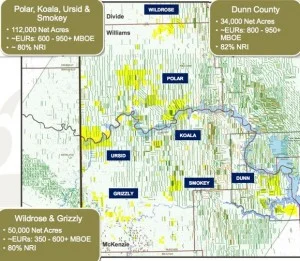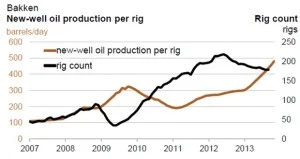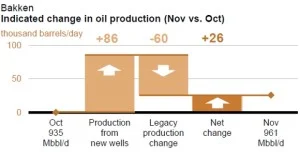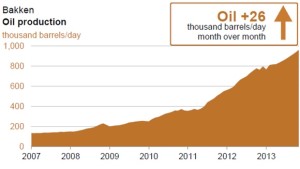Kodiak Oil & Gas grew production more than 50% to 35,400 boe/d in the third quarter. That compares to a little more than 23,000 boe/d in the second quarter and almost 16,000 boe/d in the third quarter of 2012.
Kodiak completed 29 gross (24.5 net) operated wells and participated in 37 gross (6.6 net) non-operated completions during the quarter.
The company plans to continue utilizing seven rigs and has two dedicated completion crews running through the end of the year. Production at the end of the year is expected to grow to ~42,000 boe/d.
“We believe the third quarter of 2013 was a transformational quarter for Kodiak. In addition to accelerated growth in production and reserves, we successfully brought our two down-spacing pilot programs onto full production.”
Downspacing Test In McKenzie County Proves Successful
Kodiak also released results from the company's first high density downspacing test in McKenzie County. The company drilled six wells targeting the Bakken, three wells targeting the Middle Three Forks, and three wells targeting the Upper Three Forks. The wells are approximately 800 ftt apart and target an approximate 210 acre drainage area.
The wells came online at almost 2,000 boe/d in the first 24 hours and averaged just under 800 boe/d over the first 30 days. The best well produced almost 1,100 boe/d from the Bakken and the worst well produced a little less than 400 boe/d from the Middle Three Forks in the first 30 days.






